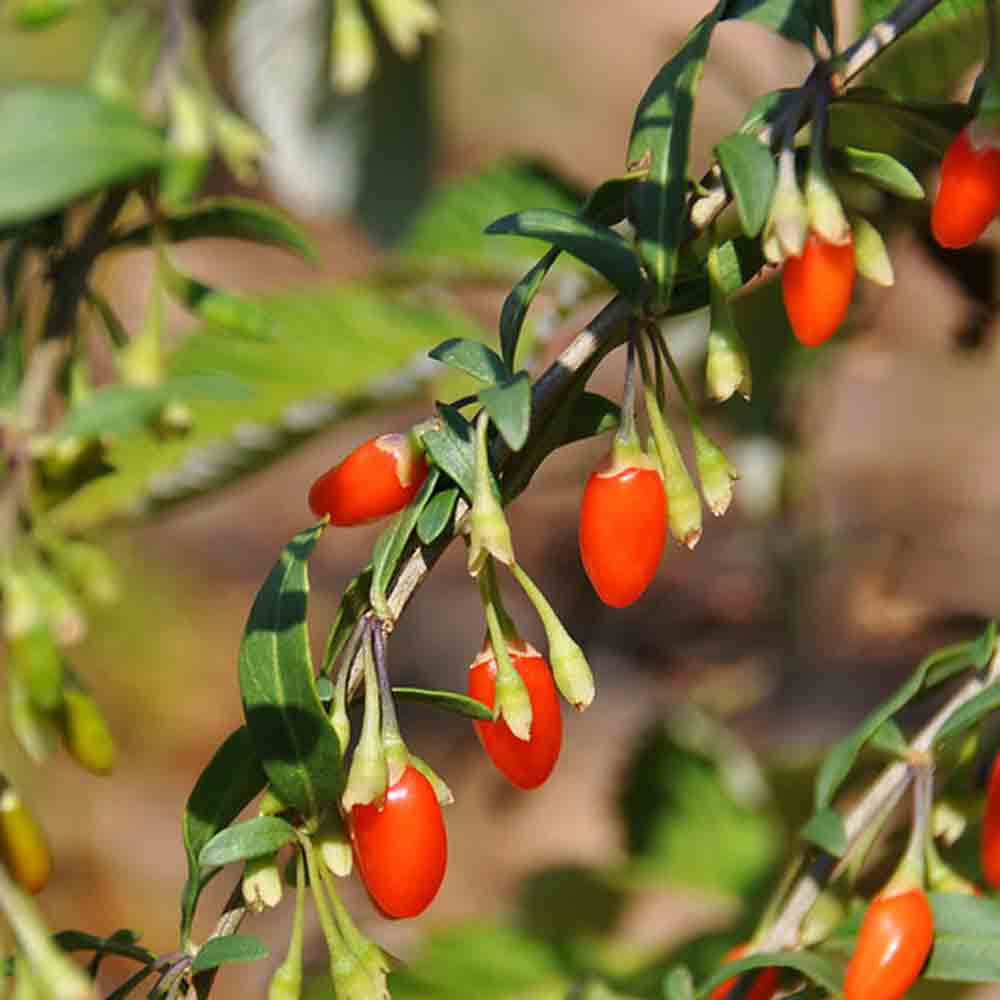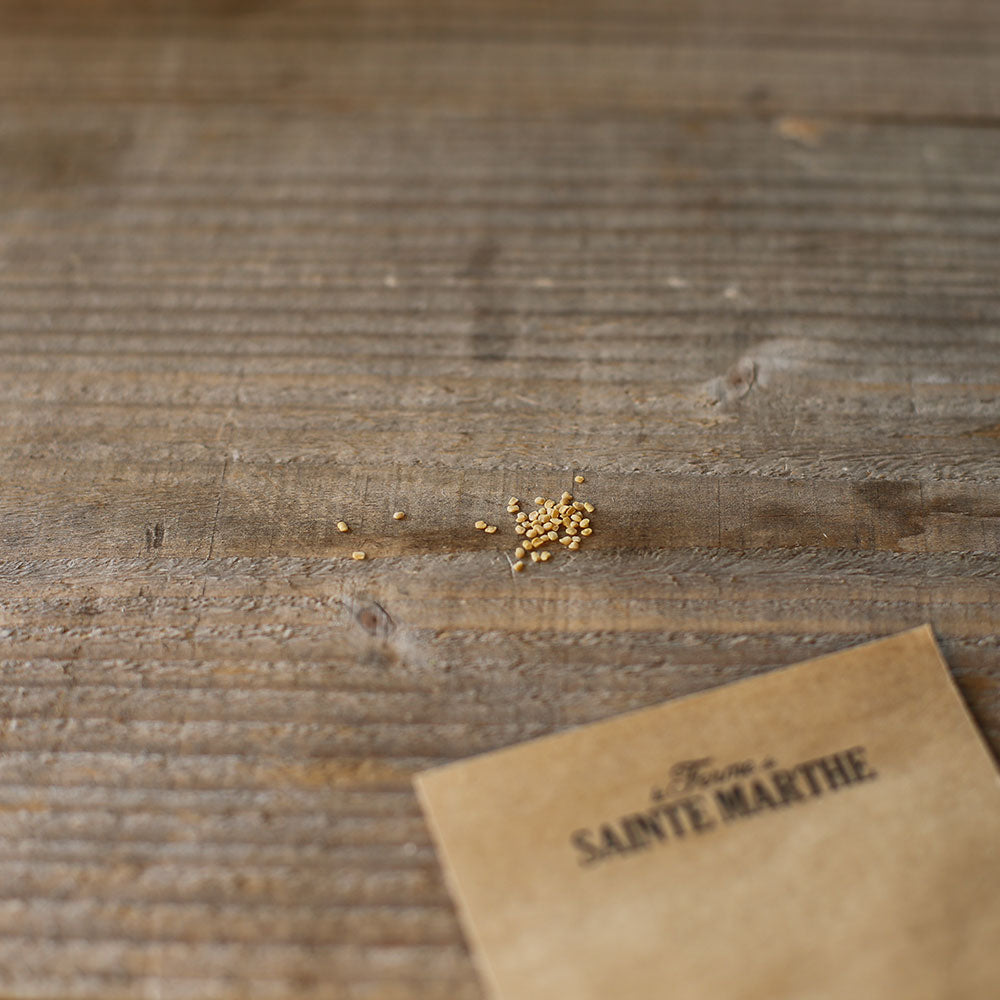GOJI AB
Lycium barbarum
Goji or Gogi , a small red berry eaten fresh or dried, is the fruit of a shrub called Lycium (or Lycium ) native to China and Tibet. This shrub, 1.50 m to 3 m high with small thorns, appreciates the sun and low temperatures (down to -22°C) as well as poor, dry soil. It tolerates wind and salt spray well. The foliage is evergreen, grayish green, and the flowers are purple. It is an ornamental shrub that can be used to create a solid hedge or for the beauty of its mauve flowers and red fruits. In August, it can also be grown in pots.
Goji berries have tremendous nutritional and medicinal value. In fact, this berry contains 18 amino acids in quantities eight times greater than those found in pollen. Goji berries are said to have benefits for the liver, kidneys, vision, and immune system, and are also said to have powerful anti-aging and anti-fatigue properties.
How to successfully sow Goji
Sow from March to June in very fine potting soil at an average temperature of 20°C-25°C. We recommend using a heated greenhouse. Sow in a mixture of 50% fine seed compost and 50% sand. Cover the seeds by a few millimeters and water. To maintain good humidity, you can cover the pots with plastic film for the first two weeks. Water every 2-3 days, then remove the film when the seeds have germinated. Germination takes place within 4 to 6 weeks. Replant afterwards.
Goji cultivation
Exposure: Full sun or partial shade when the plants are well developed, watering once a week. Water in case of drought. Mulch to maintain moisture. Maintain by removing dead branches during the winter and pinching the tips of the branches in the summer to encourage them to branch out. Add organic fertilizer or well-rotted compost once a year, in March.
Harvesting Goji Berries
Goji berries are harvested from August to October when they are red and tender. The goji plant only begins to flower and bear fruit after three years.
Preserving Goji Berries
Goji berries can be stored for 12 months in a dry place at 3°C or 4°C (in the refrigerator) after soaking them in lukewarm water for 24 hours. They can be dried using a dehydrator or in a low-temperature oven (35°C).











